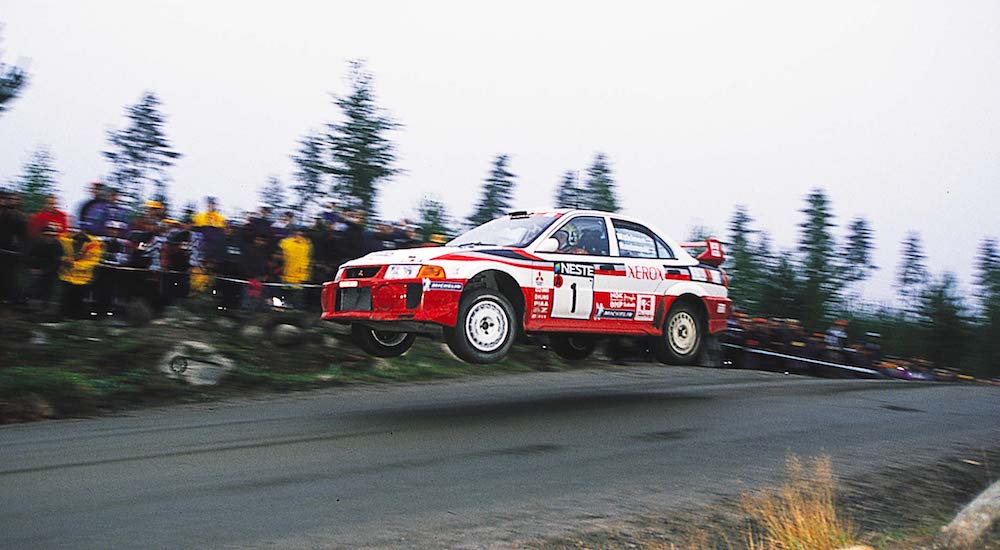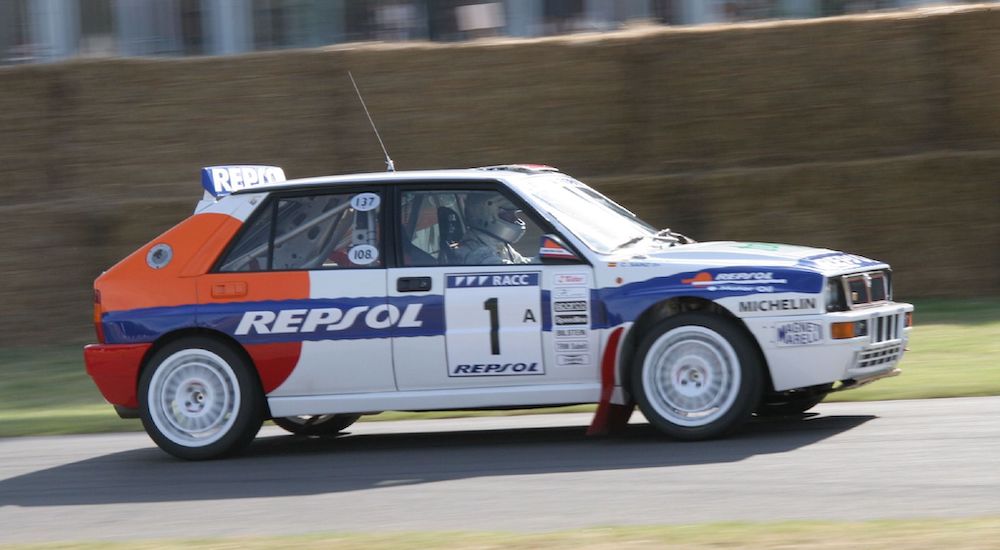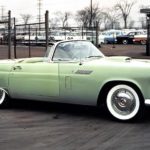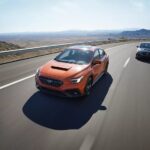Rally racing is an art form nearly as old as the automobile itself, dating back to around 1910. From the Pikes Peak hill climb to the long-distance Paris-Dakar rally, the sport challenges drivers’ skills at navigation, endurance driving, and carrying speed over terrain. Over the years, as technologies improved and television brought the sport to the masses, some truly iconic rally cars have graced the trails, producing names that any casual fan of the sport needs to be familiar with.
Here’s a look at the best of the best. There are many more in the fandom’s hypothetical hall of fame, but if you’re going to talk about rally icons, these are the top cars you need to know about.
Audi Quattro
Group B racing is hardly fading from public memory, but this most significant era in the sport of rally racing may be unfamiliar to new fans. From 1982 to 1986, Group B was the pinnacle of rally racing. The biggest engines, newest technologies, and fastest cars were all in Group B, to the extent that they have never been surpassed in the 37 years since. This was the golden age of rallying, marred as it was by disastrous accidents which led to an eventual ban on the class.
Of the many icons to thrive in this era, none was as dominant or influential as the Audi Quattro. The Quattro was a five-cylinder sports car whose claim to fame was the introduction of a system now synonymous with Audi performance: Quattro all-wheel-drive. This represented the first vehicle to bring AWD to rally. Combined with Kevlar body panels and a 444 horsepower engine, the Quattro eventually made 592 horsepower in its final form, which might have made it the most powerful rally car ever.
The car also featured in significant milestones of the sport. It was the first rally car to be piloted to victory by a woman in the world championship series, courtesy of Michèle Mouton at Sanremo in 1981. She was also the first, and so far the only, woman to win the Pikes Peak International Hillclimb in 1985, also in an Audi Quattro. In five years, the car racked up 23 WRC victories, including two manufacturer’s championships (1982 and 1984) and two driver’s championships (1982 and 1983), with Mouton, Stig Blomqvist and Hannu Mikkola as its leading drivers.
The Quattro’s extended period of dominance influenced the Lancias and Peugeots that would follow, increasing the speed and leading to the eventual demise of Group B racing. As the apex competitor in the class, it was the car that Ferrari and Porsche intended to take down with the 288 GTO, F40, and 959. Even if you’ve never heard of it, its name is familiar for a reason. Its influence surrounds us on every road, easily making it the most iconic rally car of all time.
Subaru Impreza GC/GD
When Group B was banned from racing after 1986, Group A was all that remained. This didn’t mean the racing was less exciting. Despite power limitations and other restrictions that made the cars significantly safer, by 1990 the Group A cars were quicker than Group B had been thanks to their superb handling characteristics. Group A rally cars could have their entire suspension set-up changed from race to race, which was key for getting the most out of a car on asphalt, gravel, and snowy stages.
Unlike Group B’s distinctly European flavor, Group A was dominated by the Japanese powerhouses, and few products were as competitive as the GC-platform Subaru Impreza. Subaru replaced the Legacy with the smaller Impreza as their rally weapon of choice in 1993. By 1995, the Impreza was a force to be reckoned with. Winning three consecutive manufacturer’s titles from 1995 through 1997, a driver’s championship with Colin McRae in 1995, and two more on the GD platform in 2001 and 2003, the bronze-on-blue Impreza became embedded in the minds of enthusiasts around the world.
The Impreza WRC led to the release of the Impreza WRX package and standalone model, which have been tremendous hits for the brand. Besides being great vehicles, their hype was jet-fuelled by McRae’s ridiculous on-the-edge style of racing, which came front and center in the pivotal 1997 season.
That year, McRae famously won five races, including the last three of the season, but crashed out of six, allowing Tommi Makinen to defend his driver’s title by a single point. Only one other time in the 1990s did a driver win five races and not win the championship, when Didier Auriol won six races with a Lancia Delta Integrale in 1992 but finished third.
I can only imagine the excitement of wondering what this car was going to do week to week, especially as McRae entered the final event with a chance at victory. Only Makinen’s sixth-place finish, a mere 1.8 seconds ahead of another Impreza WRC, saved his season. How’s that for iconic?
Mitsubishi Lancer Evolution
Speaking of Makinen defending his crown, there’s nothing like a car winning the World Rally Championship four years in a row to create an icon. Tommi was unstoppable in the late ‘90s, taking 18 wins in four seasons to fend off McRae, Carlos Sainz, and former teammate Richard Burns. With an upgraded generation every single year, Makinen wielded his Lancer Evo like a weapon, making a mark that would support four additional generations that ran in production until 2016.
Alongside the Impreza, the Lancer Evo’s large spoiler, busy front fascia, and bubble-like cabin proportions became icons of the affordable sports car scene. The model rapidly evolved and introduced technologies such as Active Yaw Control, which actively and independently controls the left and right front brakes to further improve handling. In doing so, it foreshadowed a future with traction control systems in street cars that would provide many of the same benefits as AWD.
A classic example of the Japanese market’s “gentleman’s agreement,” by which no manufacturer would officially rate a vehicle higher than 276 horsepower to discourage street racing, the Evo’s engine was absolutely capable of more. The car’s popularity among tuners allowed development to continue until 2009, when the Evo X was released, all on the momentum generated by the Flying Finn. The only thing keeping it below the Impreza on my list is that it only found success in one set of hands and only claimed one manufacturer’s title. The World Rally Championship of the 1990s was an iconic battle between Subaru and Mitsubishi. Whichever team you preferred, the other was an equally worthy adversary.
Peugeot 205 T16
Though it can’t be said that it “killed” Group B, the Peugeot 205 T16 will remain its final champion. Based on the front-engine, FWD Peugeot 205, the T16 was an AWD, 2000 lb, 400 horsepower turbocharged mid-engine monster introduced to Group B in mid-1984. Despite its late arrival and only running in five of twelve races, Ari Vatanen won three of them, finished third in the manufacturer’s championship, and fourth in the driver’s championship.
This incredible splash heralded the end of Audi’s dominance. Across 1985 and 1986, Peugeot won 13 of 25 races and claimed 25 podium positions on the way to comfortable victories over Lancia and Audi for both the manufacturer’s and driver’s titles.
Though it was down a little on power, it was lighter and nimbler than the competition, and that won the day. Though various teams’ withdrawals related to crashes and dangerous races were deciding factors in the 205 T16’s success, this car lined up against Titans and emerged victorious without a record marred by deadly incidents, leaving it “the undisputed champ of the Group B era” according to Hagerty. I’d be hard-pressed to disagree.
Lancia Delta
If any one car is to blame for the end of Group B, the Delta would have to be it. Its predecessor, the Lancia 037, was involved in accidents that killed one driver and broke three vertebrae of Henri Toivonen in 1985. Then, in 1986, Toivonen missed a hairpin turn and careened off-course into a ravine. His Delta S4 burst into flames, killing both occupants and immediately triggering the withdrawal of Audi and Ford, as well as a ban on Group B cars to start in 1987.
Despite the tragic death of Toivonen, the Delta S4 only lost the championship to Peugeot in 1986 on a technicality. Officials had inappropriately banned Peugeot from the race at Sanremo, where they’d scored podiums in each of the past two events, leading to FISA nullifying the results and erasing Lancia’s title bid.
These black marks sully what should be a stellar reputation. From the Stratos through the 037 and to the Delta, Lancia remains the most successful rally car manufacturer of all time, despite withdrawing from competition entirely in 1993. All of the Delta’s manufacturer’s championships would come from the S4’s successors in Group A, alongside four driver’s titles in that span, making the Delta itself the most successful rally model ever.
It should be said that the Delta S4 is significant for something other than controversy and the death of a genre. It is also the first known vehicle to feature a twin-charged powertrain, with a supercharger for immediate low-end response plus a turbocharger for extra high-end boost. The 1.8L I-4 engine was capable of 1000 hp at five bars of boost (under controlled conditions) thanks to its first-of-its-kind forced-induction system. The complex technology remains a rarity today, but it has been used in vehicles from the Zenvo ST1 supercar to several Volvos and Volkswagens.
The Unheralded Legacy of Rally Titans
Isn’t it interesting that some of the most significant rally cars come from brands that are relatively obscure in the USA? Today, Lancia makes fewer than 50,000 “supermini” Ypsilons per year. Mitsubishi remains near the bottom of the US market’s totem pole, despite offering some of the easiest access to PHEV tech in the industry. Most Americans have probably never heard of Peugeot. Few may associate Audi and Subaru with racing pedigree, despite the Quattro name and WRX model continuing through the present day.
Rally racing has provided us with twin-charged powertrains, AWD advancements from Quattro to Active Yaw Control, and some of the most dramatic aerodynamic experiments to ever hit the road. Many developments that permeate the industry and automotive culture overall come from these iconic rally cars. The next time you tune in to a rally event, imagine the influence that today’s champions will have on the next generation of enthusiasts.






